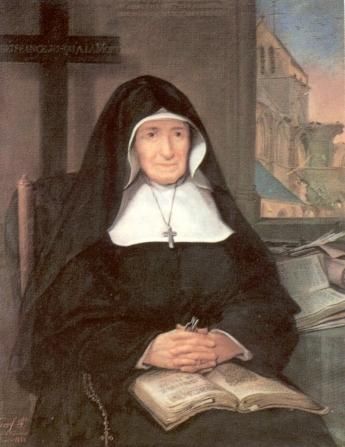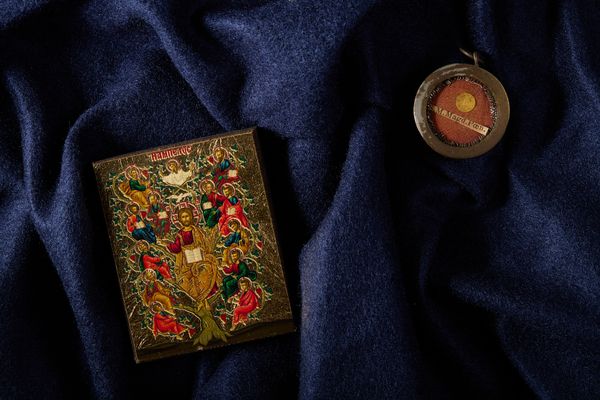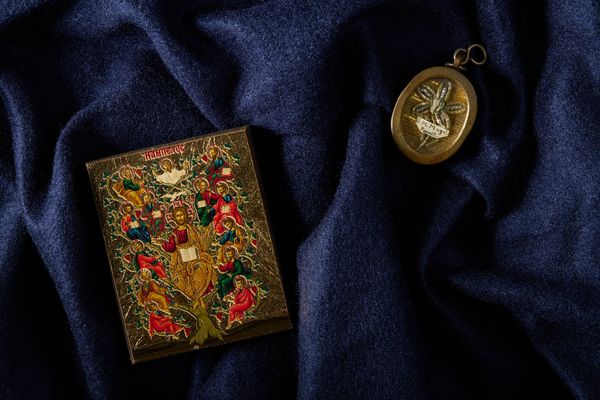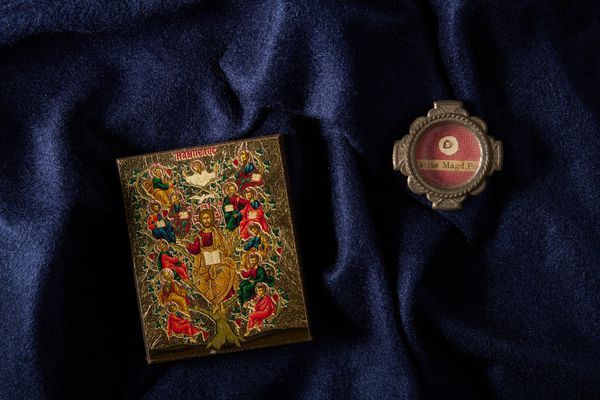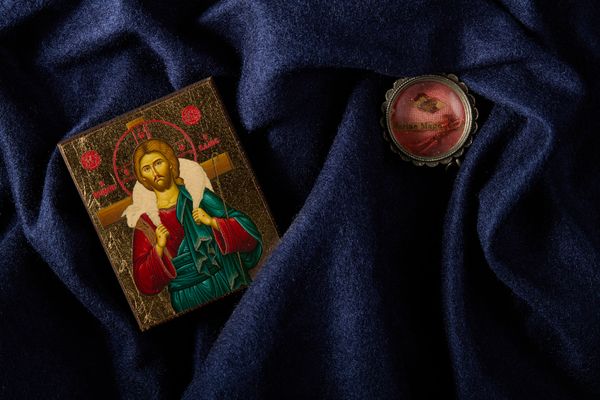Baptized as Julia Frances Catherine Postel, Saint Marie Magdalen was born on November 28, 1756 in the port village of Barfluer, France. During the Middle Ages, Barfleur was one of the chief ports of embarkation for England. Her father was a fisherman. Saint Marie Magdalen was educated by the Benedictine nuns in nearby Valognes after her initial schooling and it was during that time that she discerned a call to serve God in the religious life. As a step forward in her vocation, she took a private vow of chastity.
At the age of 18, Postel founded a school for girls in Barfleur in 1774 that became a center for underground religious activities during the French Revolution. When the school was closed by the revolutionaries, she used the building to house fugitive priests.
Authorization was granted to her to keep the Blessed Sacrament in her house as the conflict continued and she carried it on her person at times to provide Holy Viaticum to those who were ill and at the verge of death. The Jacobins often suspected her, but never made allegations and left her alone. Marie Magdalen Postel was allowed to continue with her educational mission when Napoleon and the Vatican reached an agreement guaranteeing freedom of religion in 1801. Along with three other teachers, she took vows at Cherbourg on September 8, 1807, on the feast of Our Lady’s Nativity, and helped found the Sisters of the Christian Schools.
Named Superior of the Order, she took the name of Mary Magdalen. Later, she was obliged to move a few times, finally acquiring the abbey of St. Sauveur le Vicomte. In 1832 she acquired a derelict convent in St-Sauveur-le-Vicomte to use as her headquarters which then prompted growth within the order. The Bishop of Coutances Claude-Louis Rousseau issued diocesan approval for her order and it went on to receive the papal decree of praise from Pope Pius IX on April 29, 1859.
The order based itself on the Rule of the Franciscan Third Order. This later changed in 1837 to be based upon that of the De La Salle Brothers, who founded a Roman Catholic religious teaching congregation called the Christian Brothers.
Having almost reached her 90th birthday, Saint Marie Magdalen died in 1846; her order continues its work in places such as Romania and Mozambique and in 2005 had 442 religious in 69 different locations worldwide. Venerated for her holiness and miracles, she was canonized in 1925 by Pope Pius XI.
Credits:
Discriptions of saints lives and biographies have been excerpted, summarized, or compiled from
Franciscan Media,
CatholicSaints.Info,
Catholic Online, and
Wikipedia.
